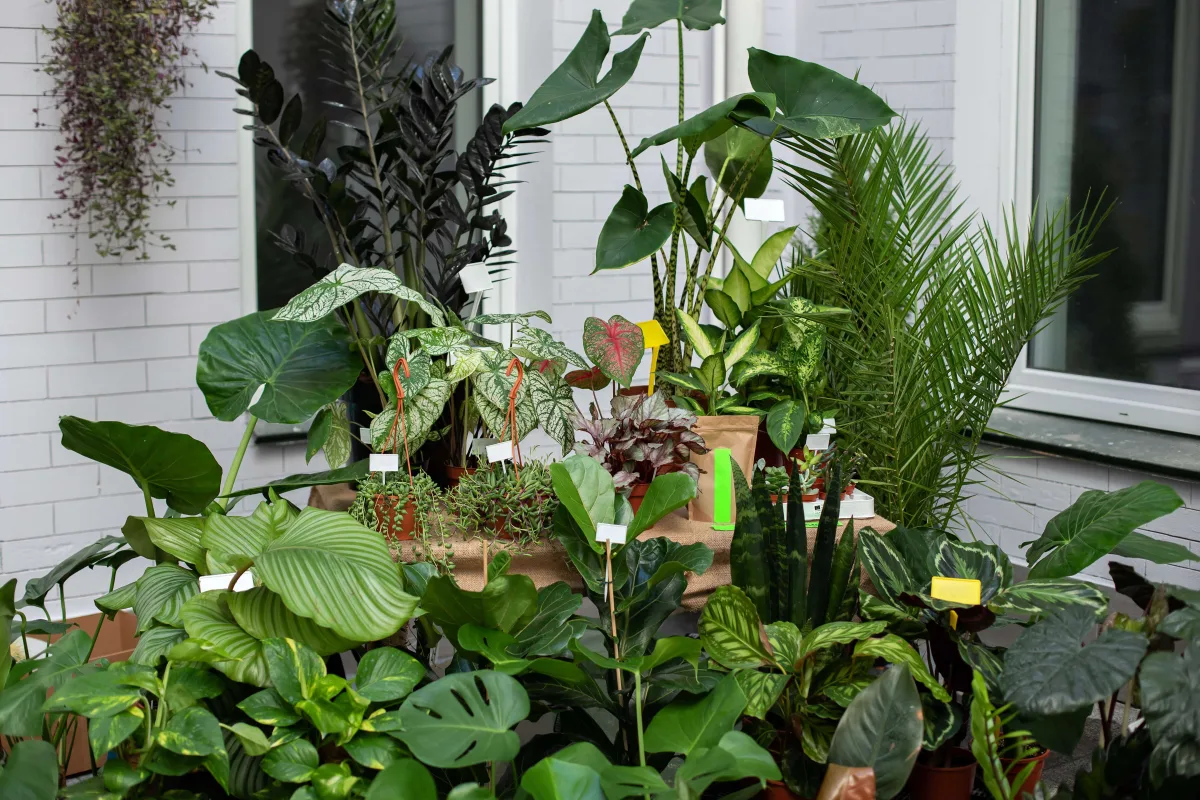
Text by Hélène Baril: Horticulturist, author & speaker
__
At the arrival of summer, most tropical plants that adorn your interiors enjoy a little vacation outside. Whether they have flowers or foliage, the fresh air will do them a world of good.
The benefits of outdoor living
When daytime and nighttime temperatures are adequate, the gradual transition of your houseplants to the outdoors will allow them to benefit from more abundant and prolonged natural light, a good breeze that will chase away dust and insects, and much higher humidity, in short, all the essential factors for their growth and health. Additionally, showers and passing rains will dislodge impurities that settle on their leaves. You will see, their foliage will be denser, their colors more vibrant, and for some, their flowering much more generous. The dream...

The outing: instructions
Acclimatization
The outing of your indoor plants must be done gently. In mild weather, when daytime temperatures hover around 15 °C and above, place your tropical plants in a shaded and sheltered area. If the weather forecasts nights below 12 °C, you will need to bring your plants inside to avoid large temperature fluctuations and protect them from the cold. Once temperatures are more stable and warmer, your plants can stay outside until the beginning of autumn. Place them first in the shade for a few days, then gradually in the sun, according to their needs. Partial shade is preferable to full sun.
Protected from wind and heavy rain
Choose a location sheltered from prevailing winds and heavy rain and ensure that your pots have drainage holes to facilitate the evacuation of excess water. Ideally, stagnant water in the saucer should be avoided. If the container is too heavy to handle, fill the saucer with gravel and place the pot on it so that the soil can dry quickly. A wind-protected area will protect the flower buds and flowers of some plants.
More regular watering
At the beginning of their outdoor stay, you will need to be vigilant as your beautiful tropical plants will dry out more quickly than indoors. You will need to frequently check the moisture of the substrate to avoid water stress. Tempered water is preferable to too cold water, which will cause the foliage to yellow and wither. Collecting rainwater remains an effective way to counter thermal shocks. Grouping your pots will help control evaporation, thus reducing large water losses, in addition to creating the effect of large tropical masses.
Chase away the intruders
Throughout the beautiful season, regular inspection of the foliage, stems, and flowers is necessary to prevent infestations of harmful insects and the proliferation of fungal diseases. Aphids, scale insects, or red spiders are among the undesirables that will occasionally, if not rarely, frequent your indoor plants. You noticed the presence of insects on your plants... Don't panic! First, identify the intruder to choose the appropriate treatment. There are many ecological and natural solutions to any gardening problem, do not hesitate to seek advice from the qualified staff of your Passion Jardins.
Tips and advice



